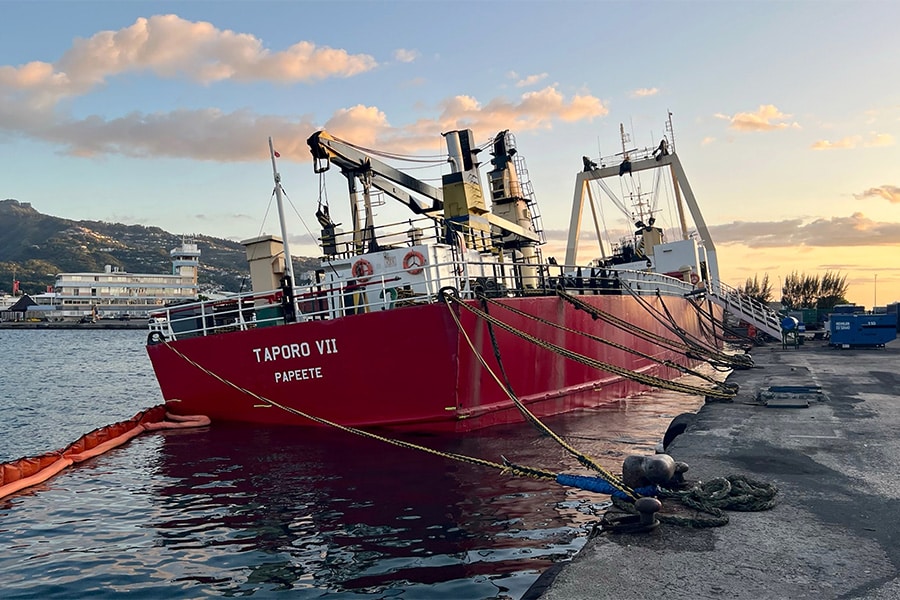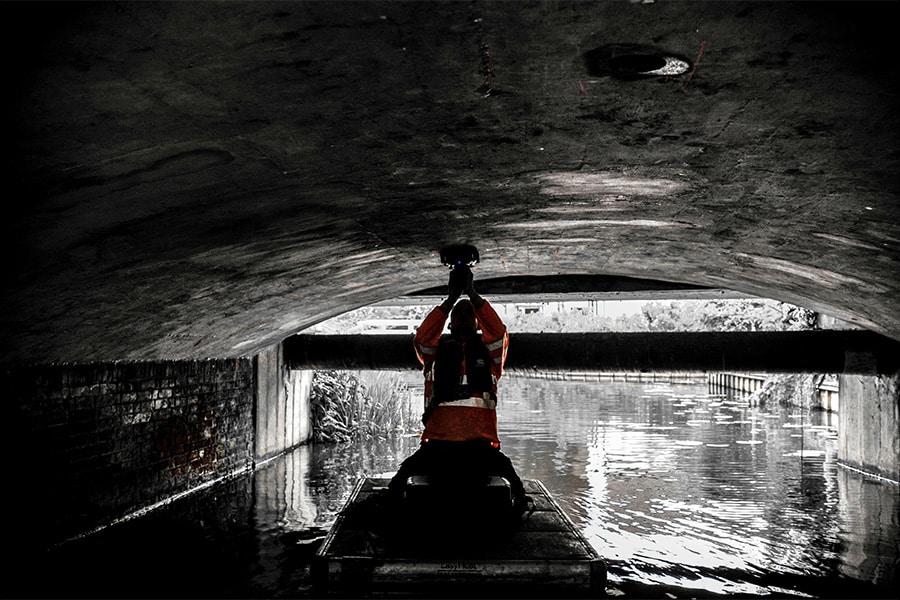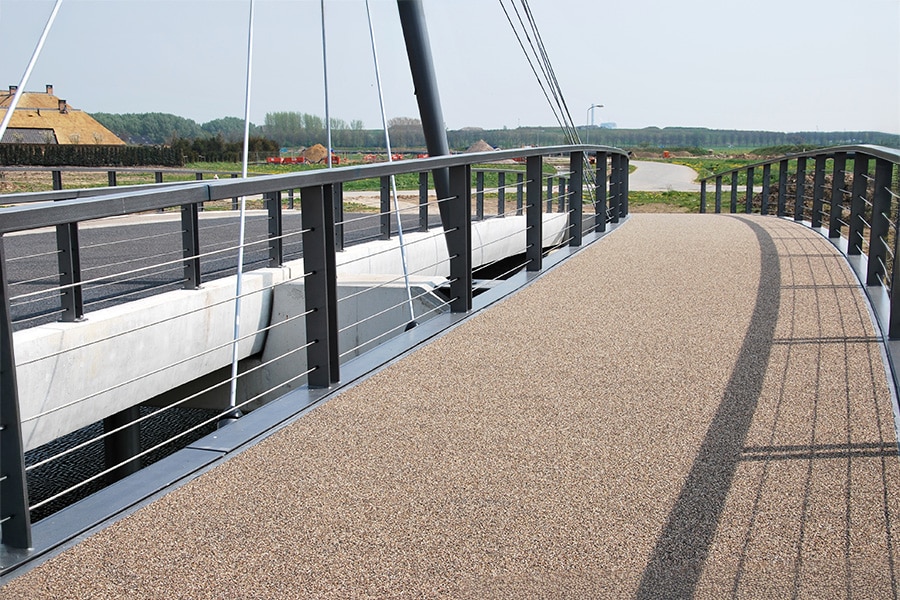
Why traditional coal tar epoxy coatings are not suitable as protective coatings at water treatment plants
It is generally believed that domestic wastewater does not damage concrete when in direct contact. In contrast, untreated municipal or industrial wastewater can damage concrete if it contains aggressive chemicals (e.g., sulfates) and/or has a low pH (below 7). However, we often hear that the upper portion of closed wastewater and sewage systems, above the waterline, under concrete covers or roofs, is affected.
If the empty space above the wastewater in a closed tank, sewer pipe or well is not properly ventilated, anaerobic (oxygen-deficient) conditions are given free rein. Bacteria then start producing hydrogen sulfide gas in the wastewater. That hydrogen sulfide gas starts to accumulate in the void, mixes there with moisture, such as condensation, on the surface of the wastewater and is converted to sulfuric acid. Sulfuric acid has a low pH and thus affects the concrete.
Consequently, we often see significant damage to the inner surface of the upper portion of precast concrete pipes, storage tanks and/or manholes in poorly ventilated and sealed sewage systems. Conditions change because of wastewater composition.

Composition of wastewater made more aggressive
Before the 1980s, urban wastewater contained a water sulfide content of typically around 10 parts per million. This was due to the amount of water used to flush toilets and the presence of heavy metals, which reduced the sulfide concentration in the water.
Since then, it seems that the presence of heavy metals in wastewater has decreased because of new regulations and certain programs designed to reduce domestic water consumption and increase the reuse of rainwater and graywater. Those regulations and practices have caused H2S gas to increase tenfold (from 10 ppm to 100 ppm, and in some cases as high as 300 ppm). As a result, the composition of wastewater has also become more aggressive. The consequences are:
- higher biogenic sulfuric acid concentrations
- surfaces subjected to persistent and prolonged exposure to acids, since the formation of sulfuric acid is more constant.
- higher H2S levels and penetration of other gases into coatings,
- greater colonization of sulfur-oxidizing bacteria, and thus thicker deposits
Traditional solutions with coal tar epoxy coatings
Coal tar epoxy has long been used for wastewater applications because it performs well and provides effective protection for many years. Coal tar epoxy is a reasonably easy-to-apply, cost-effective coating that resists low sulfuric acid concentrations for a period of time. The epoxy adheres to dry concrete, but can only seal active cracks to a very limited extent.
When coatings made of coal tar epoxy are applied to concrete surfaces, the residual moisture should not exceed 4%. Usually it takes at least 7 days at temperatures above 10°C to complete curing before the coating can be submerged. The coating is usually no thicker than 0.5 mm, as it is difficult to apply a thicker coating. Nevertheless, a thicker coating may be required for irregular surfaces or for a higher degree of protection.
Inspections of existing facilities show that the shift to more aggressive exposure limits the durability of coatings based on this technology. This is because coal tar epoxy offers good chemical resistance to low acid concentrations but falls short as the concentration increases. Also, stringent coating application requirements, limited crack sealing capabilities and low film thickness reduce the safety factor of these products.

Resistance to bacterial influences
When a new product is developed to protect water treatment plants, laboratory results often do not match the actual performance of the various technologies used in water treatment plants. One reason for this is that the usual laboratory tests only consider resistance to sulfuric acid and not resistance to bacterial action.
In light of today's more aggressive conditions, specifications for coatings or membranes used in sewer pipes and water treatment plants should include the following properties:
- better long-term resistance to sulfuric acid
- lower permeability, including low water vapor permeability and low water absorption
- resistance to bacterial action
- optimal adhesion to the substrate
- possibility of sealing cracks
- high mechanical resistance (abrasion and impact)
The specifications of the coating should take into account not only the performance criteria mentioned above, but also some criteria for applying the coating to avoid initial defects of the membrane:
- moisture tolerance for coating application and curing, especially in renovation projects
- ease of obtaining hole-free layers
- full cure time and limitations for recoating
- Ability to apply the product to overhead surfaces or vertical surfaces without sagging
- adhesion to metal substrates
- simple procedures for applying the coating in tight spaces
Conclusion: traditional systems no longer suffice
Coal tar epoxy coatings are inexpensive, easy to apply and require only low consumption. Adhesion to damp concrete is poor, curing at low temperatures is very slow, and the more aggressive composition of wastewater greatly limits durability. Traditional tests of a coating's resistance to sulfuric acid do not reflect the complexity of the chemical and biological processes that take place in wastewater environments. To assess durability, resistance to bacterial action must also be considered. Finally, the selected coatings must exhibit not only chemical and biological resistance, but also good application properties, such as applicability to wet substrates and application in high thicknesses. More importantly, the selected coatings must have excellent crack bridging capabilities to prevent cracks in the substrate from damaging the coating.
Learn more:



